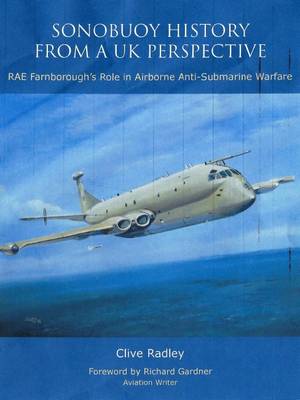A sonobuoy is a sophisticated underwater device capable of detecting and locating the source of underwater sounds. Sonobuoys -short for sonar-buoy- are relatively small expendable sonar systems that are dropped from military aircraft performing anti-submarine warfare. The buoys are ejected from aircraft/helicopters in canisters and deploy upon water impact.An inflatable surface float with a radio transmitter rises to the surface for communication with the aircraft, while hydrophone(s) sensors and stabilizing equipment descend below the surface to a depth that is variable depending on the environmental conditions. The buoy relays acoustic information from its hydrophone(s) via radio to operators on board the aircraft.The author worked in ASW for over 40 years, latterly at DRA/DERA Farnborough formerly the RAE. He has consulted a multitude of sources including leading scientists from both the UKs RAE, the USA and from UK industry in writing this book. The Royal Aircraft Establishment situated on a landlocked airfield at Farnborough Hampshire is well known as the birthplace of UK aviation and as the world's leading aerospace research centre in the twentieth century.However, most members of the general public aren't aware of the important role UK scientists and engineers at the Royal Aircraft Establishment (RAE) in Farnborough played in Cold War Sonobuoy based Airborne Anti-Submarine Warfare (ASW).
The concept of aircraft dropping acoustic sensors (sonobuoys) into the ocean for detecting submerged submarines from aircraft had been the brainchild of the UKs Professor Patrick Maynard Stuart during World War 2 to help counter the U- Boat threat to Allied convoys. Professor Blackett was Director of Operational Research with the UK Admiralty from 1942 to 1945 based in London. He was one of Churchill's Scientists as described in the winter 2015/6 exhibit at the Science Museum in London. More than any other country in the world, Britain must depend for survival on skilled minds.' So said Winston Churchill when he opened Churchill College, Cambridge in October 1959. It summed up his life-long belief that, if Britain could gain any advantage over an adversary by drawing upon the ideas of its scientists and inventors, then they should be encouraged.He adopted this approach during world war 2 and that period generated an immense number of scientific leaps and technological advances.Churchill immersed himself in the work of the nation's engineers, mathematicians and physicists and a new word appeared, 'boffin', to describe the scientists who worked away on things which most people did not even begin to understand.
But Churchill knew that among them were probably the ideas that would help win the war and he wanted them realised as soon as possible. Professor Blackett was one of Churchill's 'boffins' and a pioneer of Defence Operational Research (OR). non-existent. Let's have an entirely new gadget.objective analysis of the likely performance of new ones. The use of numerical OR inputs to aid defence procurement decision making was adopted by the UK, the USA and a number of other countries and continues in the 21 st century. Professor Blackett's ideas led to the first operational sonobuoy being developed in the USA in world war 2 with assistance from the UK and was manufactured and mass produced there.After World War 2 UK research and development expertise and sonobuoy manufacturing facilities came into being both in the MOD, centred at RAE Farnborough and the UK defence industry. The UK went on to be a major sonobuoy manufacturer along with the USA.The development of UKs expertise was a reaction to the emergence of the Soviet Union as a potential opponent after World War 2 and the development of a significant submarine arm in its Navy.The origins of sonobuoys in World War 2 are described and their subsequent develpment during the cold war and after.
Sonobuoys are treated as part of an overall airborne ASW search system and therefore the book outlines all aspects of the search system and includes the development of the UKs MPAs from WW2 to 2015 and the authors view of the Nimrod MRA4 debacle.The effect of the privatised DERA/ MOD DSTL split is described and the book ends with the UK Sonobuoy/MPA situation in late 2015 following the P8 purchase decision.The book has been written for the non-technical reader who has a broad appreciation of defence matters.Sonobuoys are a major success story for UK industry with ULTRA Electronics having become the world's leading supplier of sonobuoys.
- ISBN10 0993169422
- ISBN13 9780993169427
- Publish Date 4 July 2016
- Publish Status Active
- Publish Country GB
- Publisher radleypublishing.com
- Imprint Clive Radley
- Format Paperback
- Pages 153
- Language English
